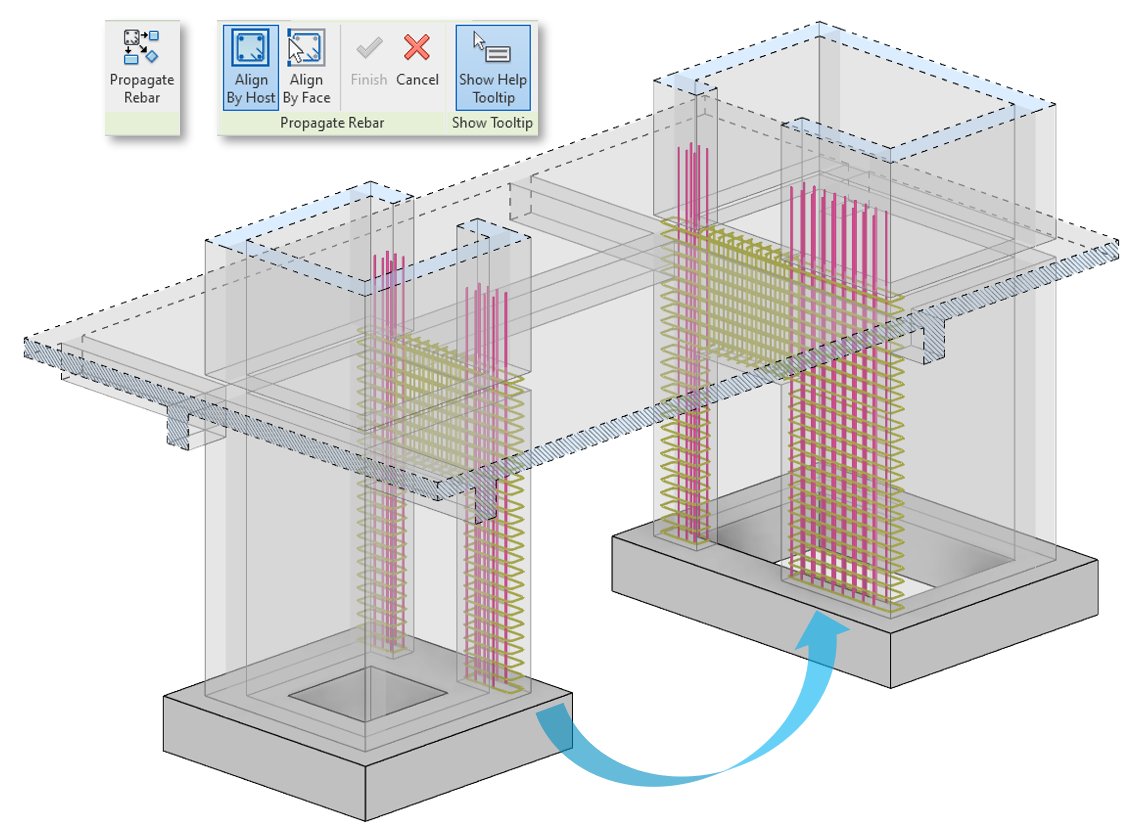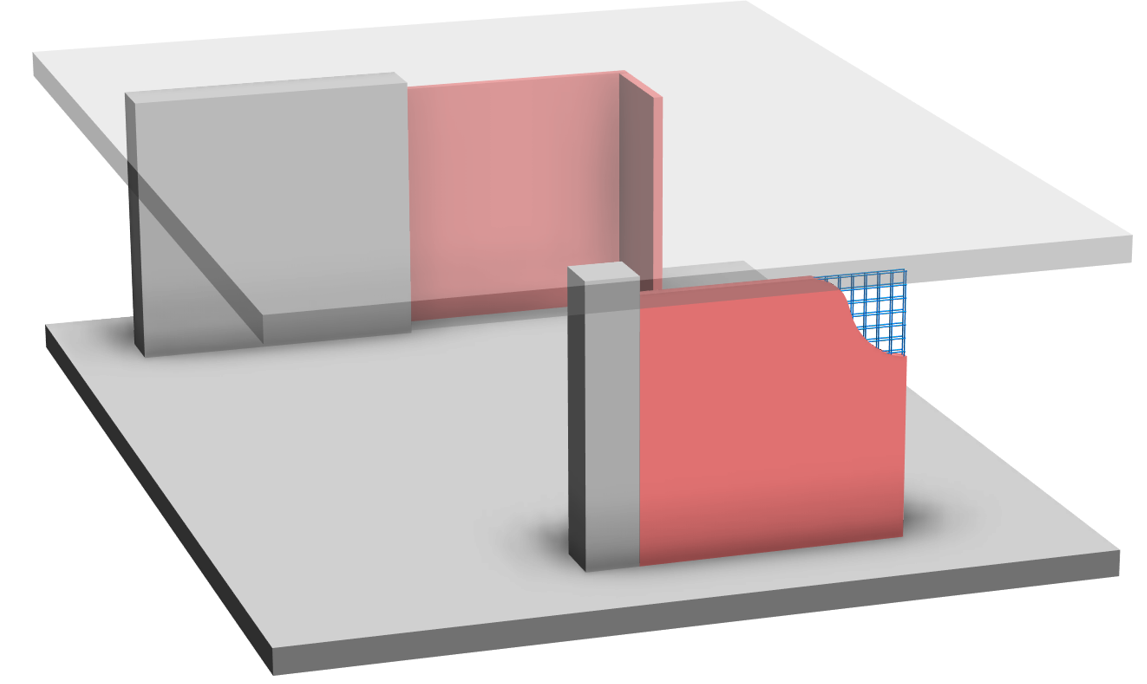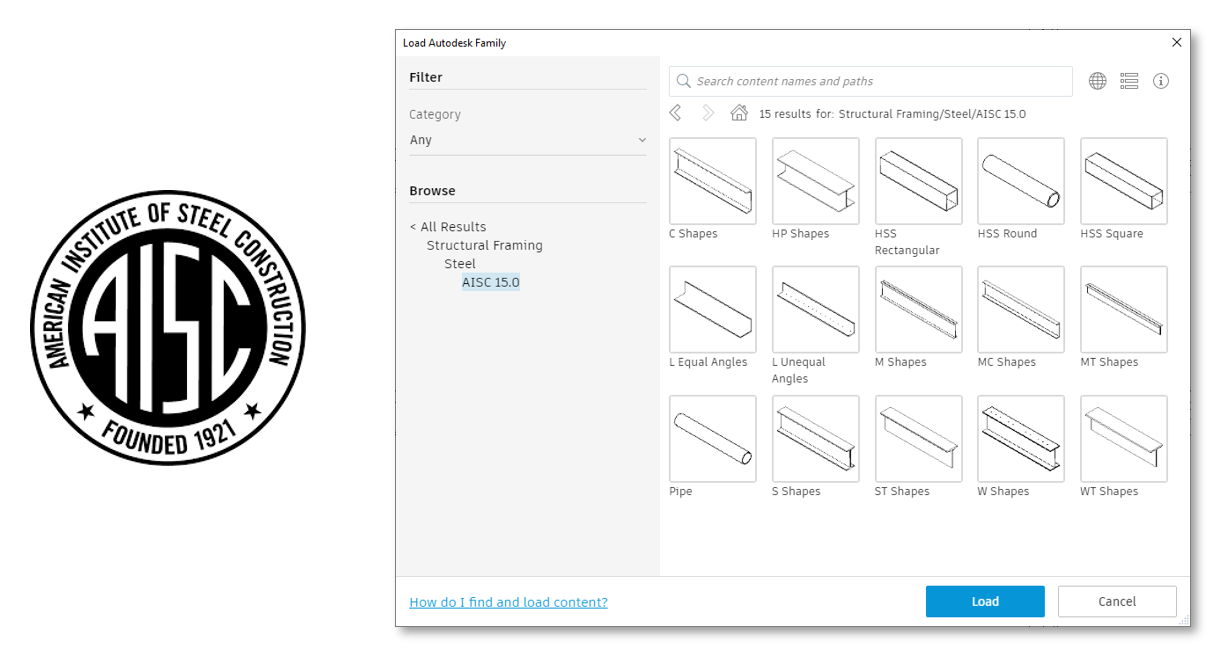It’s springtime which means we get new versions of Autodesk software! There are some great reasons to move to Revit Structure 2023 and here are our top 5:
Adaptive Propagation for Rebar
Revit 2023 introduces adaptive propagation features for rebar to increase your productivity in detailing concrete structures.When you are working on a design that has similar concrete elements, you can quickly and accurately copy shape driven rebar from one concrete host to another. These concrete host elements need not be identical for the newly created bars to match their new host. That’s the power of adaptive propagation.

The new adaptive propagation features work for free form rebars, too. Free form rebars can be propagated in a similar fashion to shape driven rebars. Free form bars can be aligned to a destination host or face.
This new feature will enable you to model rebars in Revit faster and easier, increasing your productivity in detailing concrete structures.
Library-based Connection Design Automation
Revit 2023 adds library-based steel connection design automation features. You can both model your design intent faster and embed structural engineering and fabrication rules to reduce iterations. Sample rules are provided for placing steel connections based on predefined ranges of applicability. These are found in the Steel Connection Automation player. Simply search for “by ranges” to filter out those that make use of the ranges of applicability.Revit 2023 includes sample steel connection libraries to support certain regional standards. These connection libraries are customizable, enabling you to adjust and extend them to meet your local or regional requirements.
The new library-based steel connection design automation features enable you to design steel structures more quickly and accurately using predefined and easily customized rules.

New Workflow for Structural Analysis
As the analytical model is now completely autonomous, you can choose to initiate structural analysis workflows from Revit without any physical context.For example, when starting a project from scratch, you can focus exclusively on analytical modeling—just like you would in traditional analysis software.
In Revit, analytical elements are fully parametric and are associated with grids and levels, enabling you to control element positioning using these datums.

This new capability enables engineering driven, analysis-centric workflows directly from Revit.
Reinforced Concrete Non-bearing Partition Walls
You can now change the Structural Usage value to non-bearing to create structural walls that define and divide spaces and support no vertical load except their own weight.You can export non-bearing structural walls to IFC, for accurate coordination of reinforced concrete partition walls.

This feature offers you better coordination with contractors and fabricators giving accurate quantity takeoffs.
Updated AISC Shape Type Tables
The American steel section shapes has been updated.The steel shape tables according to the 15th edition of the AISC have been added.

Now you can use the latest steel profiles to create your steel structures.
